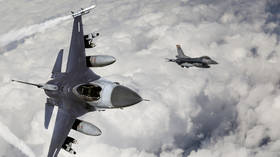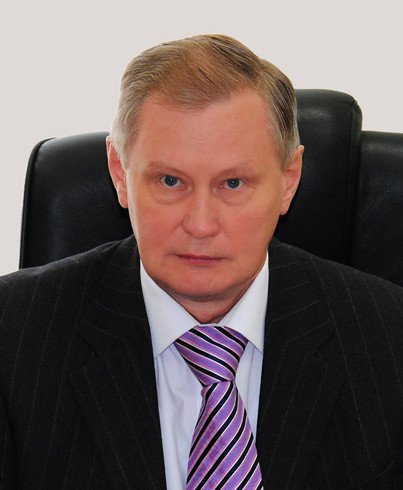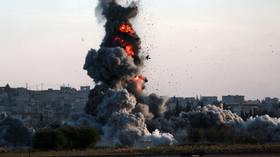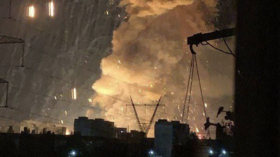Mikhail Khodarenok: The West says it wants Ukraine to win, but is it ready to supply Kiev with the armaments it needs for victory?

Participants in the NATO summit in Madrid called upon Ukrainian President Volodymyr Zelensky to settle for nothing less than a military resolution to the conflict in Ukraine. Belgian Prime Minister Alexander De Croo voiced the position of the US-led as follows:
“It is very important to continue talking with President Volodymyr Zelensky, emphasizing that the war can only be won on the battlefield, and we must continue to support President Zelensky and the population of Ukraine so that they win on the battlefield,” Alexander De Croo said.
The collective West’s military, political, and strategic goals in the armed conflict in Ukraine have at least two facets. The first is to prevent Russia’s military from achieving success during its military operation in Ukraine. The second is to thereby restrain China’s possible aspirations to solve the Taiwan problem by military means.
However, in order for Ukraine to gain the upper hand, the Armed Forces of Ukraine (AFU) must, at a minimum, achieve air supremacy (at least during a presumed offensive or counterattack of strategic scale, at least for a while), as well as numerical and qualitative superiority in artillery and armored troops. Among other things, the AFU needs to stockpile sufficient material resources (jet fuel, diesel fuel, gasoline, ammunition, food supplies) for at least 30 days of combat operations.
Even with the help of the collective West, this would be a very difficult task. It looks especially difficult in terms of implementation. Let’s take as an example Ukraine’s Air Force and some other branches of its armed forces.
In order to gain air supremacy, or at least fight on equal footing with the Russian Aerospace Forces, the Ukrainian Air Force would require at least 124 multifunctional fighters (i.e. three fighter regiments of 42 aircraft each), 36 combat planes (three squadrons of 12 aircraft) and six training fighters (dual control aircraft). It is quite possible that these units will be organized like those of the United States and other NATO countries – squadrons of 24 fighters, with three squadrons combined into a wing.
Among the possible contenders to become Ukraine’s main combat aircraft, the most likely candidate is America’s F-16C /D, which is currently being withdrawn from service in the US Air Force and replaced by the F-35. However, it is not that a concrete decision has yet to be made on this issue – these problems have not even been discussed.
Now, let’s try to imagine how the process of re-equipping the Ukrainian Air Force with fundamentally new aircraft will go. To begin with, it will be necessary to send at least 200 flight personnel to the United States for retraining (so that there are at least two crews for each fighter).
Maintenance personnel will also have to be sent for retraining (aircraft mechanics from different battalions). The number of these specialists will be about an order of magnitude greater than the number of actual pilots.
However, an airplane is only the tip of the iceberg when it comes to aviation. Ukraine will have to be supplied not only with combat planes, but also the entire array of airfield equipment, from fuel tankers and the necessary fuel to airfield power units and the loading trolleys that deliver aviation weapons to the planes and mount them on the aircraft.
Absolutely none of Ukraine’s equipment is compatible with American fighters, as it is all Soviet-made. Not even its free-fall bombs, whose size and suspension lugs differ from similar products from the United States.
In addition, the US (as well as other NATO countries) will have to supply the Ukrainian Air Force with the entire range of aviation weapons (from guided and unguided missiles of various classes to free-fall bombs) in sufficient quantity to last for a very long period of hostilities.
With the transfer of Western-made combat planes to Ukraine, the problem of controlling fighters in the air during combat will inevitably arise. The American F-16s are not integrated in the automated command and control systems of Ukraine’s current fighter aircraft in any way, shape, or form. And, in order to solve this problem, the United States might well have to supply the Ukrainian Air Force with planes like the Hawkeye E-2C/D – a tactical early warning aircraft equipped with long-range radar. Without such means, it will be simply impossible to effectively control planes during air battles and strikes against ground targets.
Now what remains is to calculate when these three fighter aviation regiments will reach ‘initial operational readiness’, as they say in the US. According to the most optimistic forecasts, this won’t happen before the winter.
We see approximately the same picture (but certainly less complicated) with the formation of armored divisions. To give the AFU offensive potential, they will need at least four to five tank brigades (each numbering 120-140 main battle tanks) equipped with M1 Abrams (in this case, there are possible options – the Leopard-2 or Leclerc). Again, Ukrainian tank crews will have to go through all the necessary stages in this case – retraining, obtaining new weapons and equipment, and live-fire exercises. So, it will not be possible to resolve these issues very quickly.
With ground artillery and multiple rocket launchers, things will be easier. The AFU will be able to master them quickly enough. But even here, the processes of obtaining and mastering this hardware will not be simultaneous in any way. It will take many months to form 7-8 artillery brigades with 72 guns each (the APU requires no less) and bring them to the level of combat readiness.
But, during this time, the political environment and strategic situation on the front may change significantly, and there is no reason at all to assume that this will be in Ukraine’s favor. There is only one conclusion to be drawn here – the Russian Armed Forces need to achieve significant results without waiting for Ukraine to be rearmed with advanced modern weaponry of Western standards.
In other words, to use the time needed to equip the AFU to their own advantage.
The statements, views and opinions expressed in this column are solely those of the author and do not necessarily represent those of RT.
















